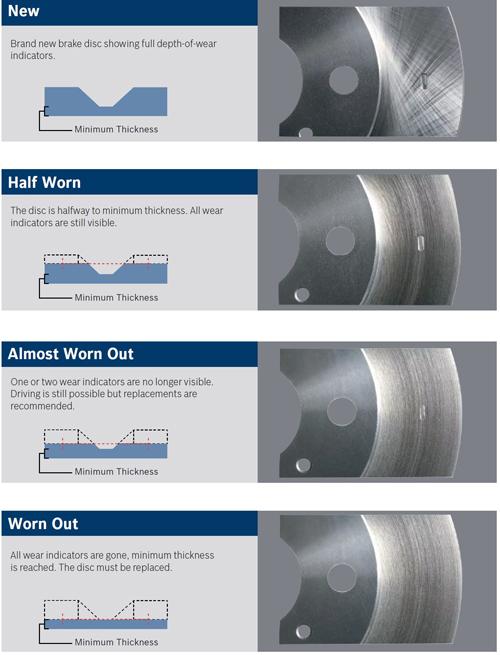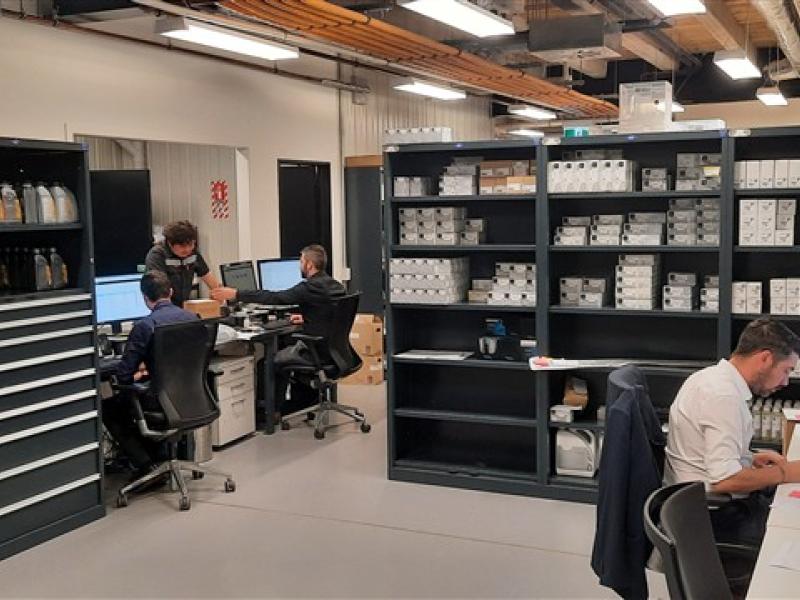The production of brake discs requires in-depth know-how and extreme precision. Bosch selects casting materials and alloying components based on their quality as well as their experience in braking. Rigorous testing at Bosch facilities and independent institutes assure a consistently high quality standard – for safety, reliability and long life.
Bosch does not tolerate any reduction in safety, or any reduction in the life of brake rotors. Poor casting quality results in 20 percent to 30 percent less wear life and shrink holes in the casting. This can lead to cracks, or in worst cases, shearing of the hub from the friction ring.
Bosch’s experience in processing original equipment brake discs guarantees minimum tolerances for run-out and disc thickness variation (DTV). Excessive run-out produces DTV, which in turn causes pedal vibrations, steering wheel or entire wheel pulsation and brake noise.
Checklist
To maintain safety, Bosch recommends following this simple checklist:
- Check the disc thickness: if it falls below the required minimum, replace the brake discs in pairs.
- Inspect the front axle and steering.
- Check the wheel bearing play.
- Clean the wheel hub (do not use paste lubricants).
- Check the wheel hub for lateral run-out.
- Ensure the mobility of the brake calliper.
- Tighten the wheel bolts with a torque wrench.
Long history
Bosch has a long history as far as automotive braking is concerned, and braking systems were introduced into the Bosch product range offer in 1927 to meet the increasing demand on performance and safety in braking systems in vehicles.
Over the years, Bosch has worked continuously to improve the quality and reliability of its braking range to the market. In 1978, Bosch released its ground breaking technology in the Anti-lock Braking System (more commonly known as ABS), which became the origin for all modern braking control systems
With 30 development facilities managing research and development, 19 production facilities, 140 plants and 280 suppliers across the globe and a few test tracks around the world, Bosch is committed to satisfying the stringent quality requirements towards material and production of braking products.
Bosch’s aftermarket range for brake repairs now contains 26 product lines with more than 10,000 part numbers. The Bosch brake range offer covers products from hydraulic brake components such as master cylinders, wheel brake cylinders to brake callipers, brake pads, drums, disc rotors and brake hoses. It also includes Bosch brake fluid and other workshop consumables.
With several acquisitions of various braking companies around the globe, Bosch has added to its expertise in the area of braking components. Within some of its specialist locations for brake pads and brake shoe in the Asia-Pacific region, Bosch now has its own research, development and production capability, directly integrated into the Bosch Automotive Aftermarket business division.
Recently, Bosch made a substantial investment to a dedicated brake disc testing lab in China. The new lab is run by eight Bosch engineers and will test all Bosch automotive aftermarket brake discs. The scope of testing includes quality control points focusing on dimensional checks to ensure precision in fitment, as well as material analysis to ensure reduce noise, dependable performance and longer life.
Bosch products and technology, supplied through a global network of factories, can be found in many makes of car currently produced around the world. This strong link to Original Equipment development and innovation means Bosch is able to deliver a superior aftermarket offering to its customers.
You can find Bosch brake parts at many automotive parts distributors and retailers. For more information on Bosch brake parts, visit www.bosch.co.nz.






